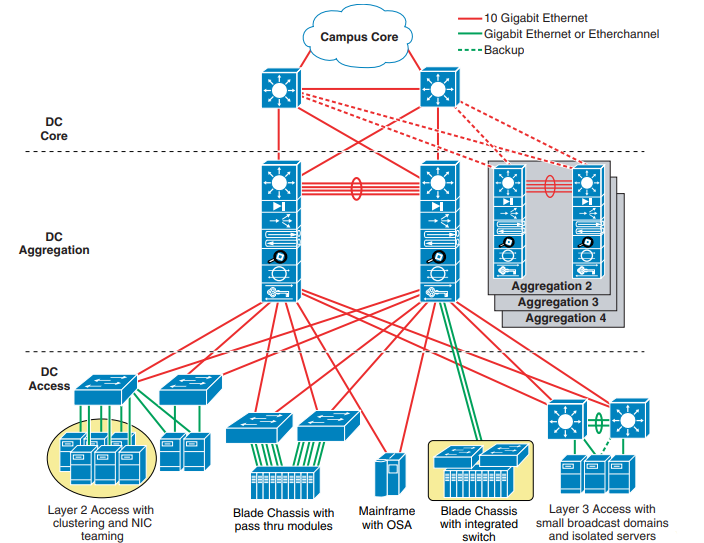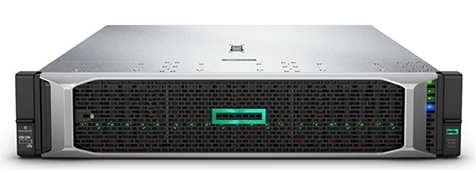
Nowadays, building a data center to provide services for enterprise or providers is more and more important. However, it cost much to build an available data center, that is, it needs many routers, switches, servers, storages, as well as needed accessories.
Trends and Challenges of Building a Data Center
- Data Center Is Important to An Enterprise Business.
The data center is home to the computational power, storage, and applications necessary to support an enterprise business.
- Data Center Infrastructure Inspect The IT Architecture.
The data center infrastructure is central to the IT architecture, from which all content is sourced or passes through. Proper planning of the data center infrastructure design is critical, and performance, resiliency, and scalability need to be carefully considered.
- Good Data Center Design Can Save Cost of Enterprise.
Another important aspect of the data center design is flexibility in quickly deploying and supporting new services. Designing a flexible architecture that has the ability to support new applications in a short time frame can result in a significant competitive advantage.
- Want A High Performance, We Need Consider More.
A flexible data center design requires solid initial planning and thoughtful consideration in the areas of port density, access layer uplink bandwidth, true server capacity, and oversubscription, to name just a few.
Data Center Basic Layered Design of Core, Aggregation, and Access
The data center network design is based on a proven layered approach, which has been tested and improved over the past several years in some of the largest data center implementations in the world. The layered approach is the basic foundation of the data center design that seeks to improve scalability, performance, flexibility, resiliency, and maintenance.
Figure shows the basic layered design.

Key Features of 3 layers design of Data Center:
- Data center network is divided into 3 standard three-layer structure.
The layering is mainly based on the principle of internal and external partial flow, and the data center network is divided into a standard three-layer structure of core layer, aggregation layer and access layer. Most of the traffic between the server and the business system is within a single functional zone and does not need to pass through the core; the traffic between zones only passes through the core, and it is easier and more correct to implement mutual access control strategies on the aggregation layer switches of each zone. The core pressure will be better, the scope of the fault will be smaller, and the fault recovery will be faster.
- Core layer provides the interconnection.
The core layer provides the interconnection of multiple data center aggregation modules and connects to the core of the campus network; it is required to have high switching capabilities and burst traffic adaptability; the core of large data centers requires the expansion capability of multiple aggregation modules, and small and medium data centers share the core of the campus; current Mainly with 10GE interface, high performance requires 4-8 10GE bundle.
- Aggregation layer provides high-bandwidth export.
The aggregation layer provides high-bandwidth export for server farms; it requires high-density GE/10GE ports to achieve access layer interconnection; it has more slots to provide value-added service module deployment. The mainstream practice in the industry is to deploy various security and application optimization services at the convergence layer, such as integrating firewalls, load balancing, and application acceleration boards on switches.
- Access layer supports high-density access.
The access layer supports high-density Gigabit access and 10 Gigabit access; the total access bandwidth and uplink bandwidth have convergence ratio and line speed modes; based on rack considerations, 1RU has more flexible deployment capabilities; supports stacking, more Expansion capability; uplink dual link redundancy capability.
Recommended Products of Building a Data Center:

Cisco ASR1001-HX System,4x10GE+4x1GE,2xP/S, optional crypto

Cisco Catalyst 9300 48-port data only, Network Advantage

Cisco Catalyst 9200L 48-port data, 4 x 10G, Network Essentials

The HPE ProLiant DL380 Gen10 Server is securely designed to reduce costs and complexity, the Intel® Xeon® Processor Scalable Family with up to a 71% performance gain and 27% increase in cores.
If you have any questions of building a data center, welcome to leave your comments. Or you can contact us to get solution: ccie-support@router-switch.com.
Related Topics:
How to Cool Down Your Data Center in the Hot Summer?
Quiz for Cisco Nexus Product Family & Evolution of Data Center Architecture


